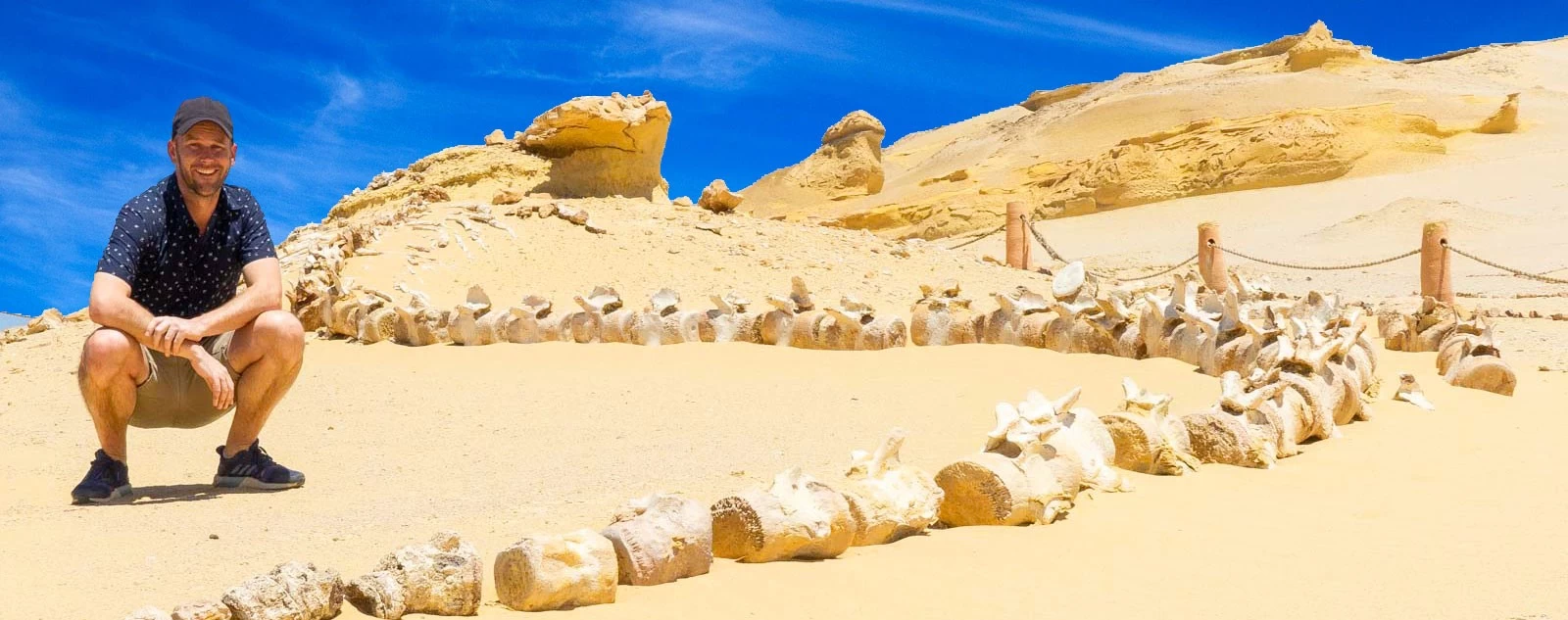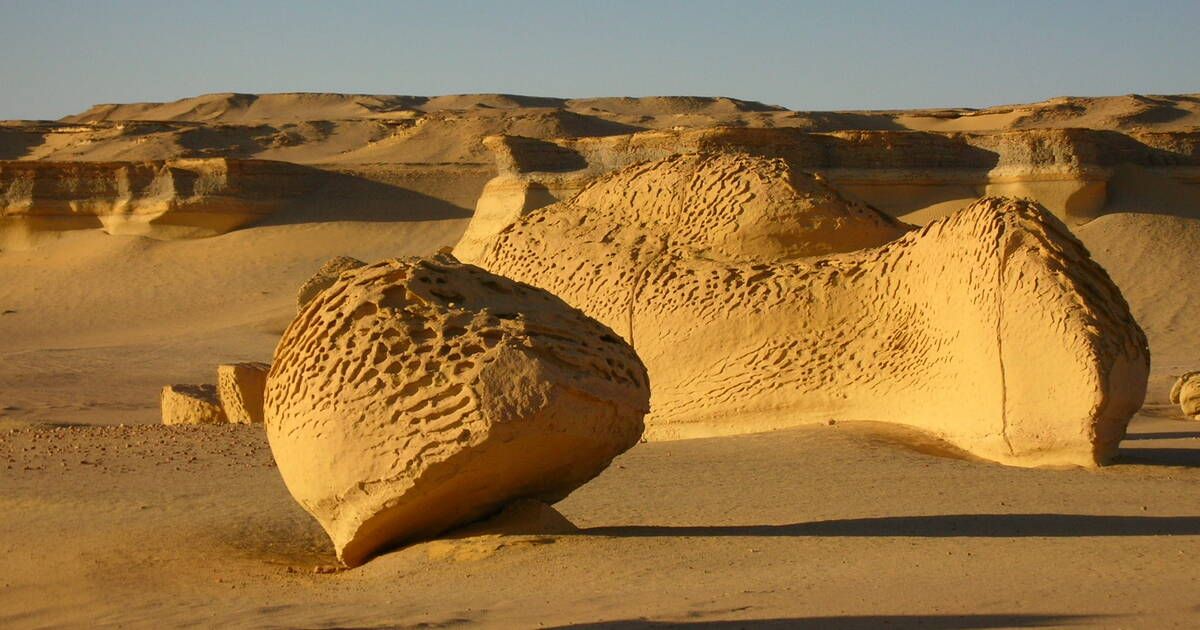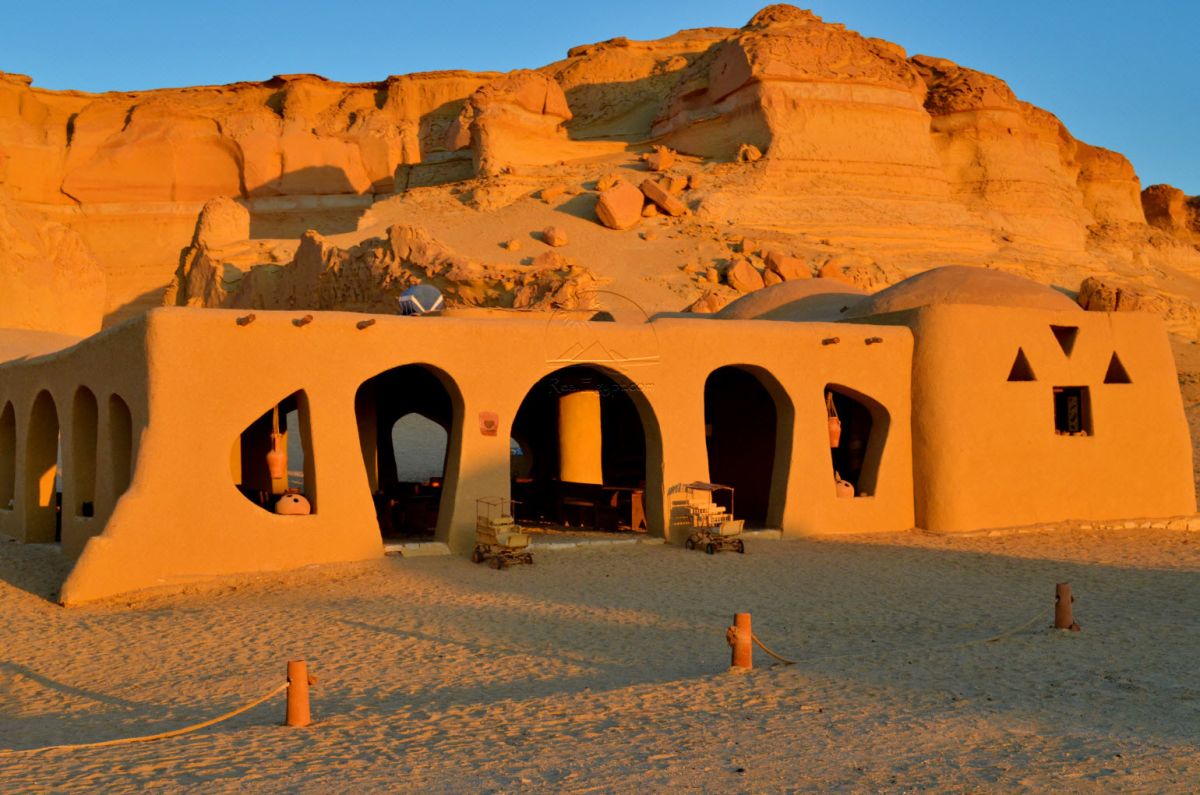


Wadi Al-Hitan, or the Valley of the Whales, is one of the world's most fascinating paleontological histories. Located in Egypt's Western Desert, Fayoum Governorate, the area was covered by an ancient ocean known as the Tethys Ocean over 40 million years ago.
At this early ancient period, the region was occupied by early modern whale ancestors known as Archaeoceti. They were midway in their evolutionary process of changing from land mammals to fully aquatic mammals. Their fossils, remarkably well-preserved at Wadi Al-Hitan, are whale skeletons with vestigial hind limbs that unequivocally show this radical change in evolution.
While known to local Bedouins for millennia, Wadi Al-Hitan was unknown to scientists until the early 20th century. Egyptian and foreign paleontologists uncovered important fossils in the 1900s, but it was not until later expeditions in the 1980s and 1990s that the full importance of the site became clear.
Because of its scientific value and flawless preservation, Wadi Al-Hitan was made a UNESCO World Heritage Site in 2005. It is now preserved as part of Egypt's natural heritage, revealing to scientists and visitors alike some of the very deep evolutionary history of the Earth — hidden in rock beneath the desert sands.

On your Fayoum Day Trip , this ways to visit wadi el rayan
By Car: The most flexible way. Take the Cairo–Fayoum Desert Road, then continue through Youssef El Sediq town. A 4x4 is recommended for off-road areas.
By Tour: Many tour operators offer full-day trips from Cairo, including transport, a guide, and activities.
By Taxi: Hire a driver for the day and agree on a round-trip price. Be sure the driver waits or arranges a return.
October to April is the best time to go. The weather is cooler and perfect for outdoor adventures like hiking, sandboarding, and sightseeing.
Visit the Waterfalls – Egypt’s only natural waterfalls, located between the Upper and Lower Lakes.
Chill by the Lakes – Relax, picnic, or try kayaking or fishing.
Sandboarding – Thrill-seekers can ride the desert dunes near the reserve.
Hike Jabal El Modawara – A scenic hill with stunning views.
Wildlife Watching – Spot birds and desert animals like the fennec fox.
Desert Camping – Spend the night under a sky full of stars.
Day Trip to Wadi Al-Hitan – Explore nearby Valley of the Whales, a UNESCO site.

1. Come During the Cooler Season
October to April is best. The temperature is pleasant for pursuits like hiking, sandboarding, and sightseeing. Don't come in the summertime heat — it's over 40°C (104°F)!
2. Take a 4x4 Vehicle
The environment inside the reserve can turn unpredictable, especially if you're walking across sand dunes or riding an off-road vehicle. A 4x4 is highly recommended, or else take a guided tour that includes transport.
3. BYOF
No shops or restaurants are available inside the reserve, so bring lots of water, snack food, and a picnic lunch — especially if you're going to be actively searching for a whole day.
4. Expect Spotty Signal
Cell phone reception can be very poor or nonexistent in the reserve, especially near the lakes and waterfalls. Download maps and inform someone of your plans before leaving.
5. Pack Accordingly
Bring sunscreen, sunglasses, a hat, sturdy shoes, and a light jacket (it can get chilly after dark). If camping, bring your own gear or book with a tour operator that offers it.
6. Don't Leave Home Without Your Camera
Wadi El Rayan is incredibly photogenic, from the waterfalls to the dunes and the wildlife. Have your phone or camera at the ready — sunrise and sunset are simply stunning.
7. Respect Nature
This is a reserved area, so be kind to nature. Don't litter, do not feed wildlife, or cause any harm to the flora. Leave only footprints, take only pictures!
8. Take Your Tour Along with Wadi Al-Hitan
Just an hour's drive away is Wadi Al-Hitan (Valley of the Whales), which is a UNESCO World Heritage area with skeletons of whales fossilized therein. It's a perfect double stop for nature and history lovers.
Tucked away in Egypt’s Fayoum Desert, Wadi Al-Hitan — the Valley of the Whales — is one of the world’s most fascinating natural heritage sites. Recognized by UNESCO in 2005, this site is not just a treasure for scientists but a truly surreal experience for any traveler.
What makes Wadi Al-Hitan so unique is its collection of fossils dating back over 40 million years, showcasing the earliest known forms of whales. These ancient skeletons, some still bearing vestigial legs, tell the incredible story of how whales evolved from land-dwelling creatures into the ocean giants we know today.
But beyond its scientific significance, Wadi Al-Hitan offers breathtaking desert scenery, well-preserved fossil trails, and an immersive visitor center with 3D displays and educational exhibits. It’s a place where you can walk through time, touch the ancient past, and witness evolution carved into stone.
Whether you're into natural history, geology, desert landscapes, or just discovering off-the-beaten-path wonders, Wadi Al-Hitan is an unforgettable destination that deserves a spot on every explorer’s list.
Visiting Wadi Al-Hitan is to walk along a textbook of life itself. When you take this walk through this UNESCO World Heritage Site, you will discover how fossils interred here tell the tale of how whales emerged from land animals to sea giants. You'll learn about the extinct whales that once swam through this area when this land was covered in an ancient sea and see fossilized skeletons — a few with legs—that testify in rare record to this dramatic transformation. The fossil path, interpretive signs, and visitor center come together to make Wadi Al-Hitan an unforgettable experience for learning, uniting science, geology, and natural marvel under one roof.

Copyright © 2024 Todos los derechos reservados
